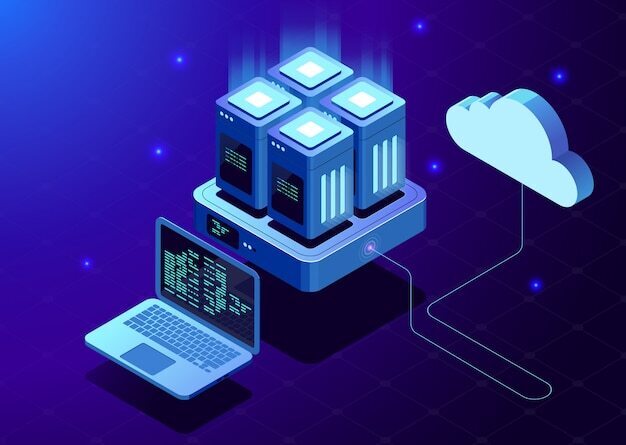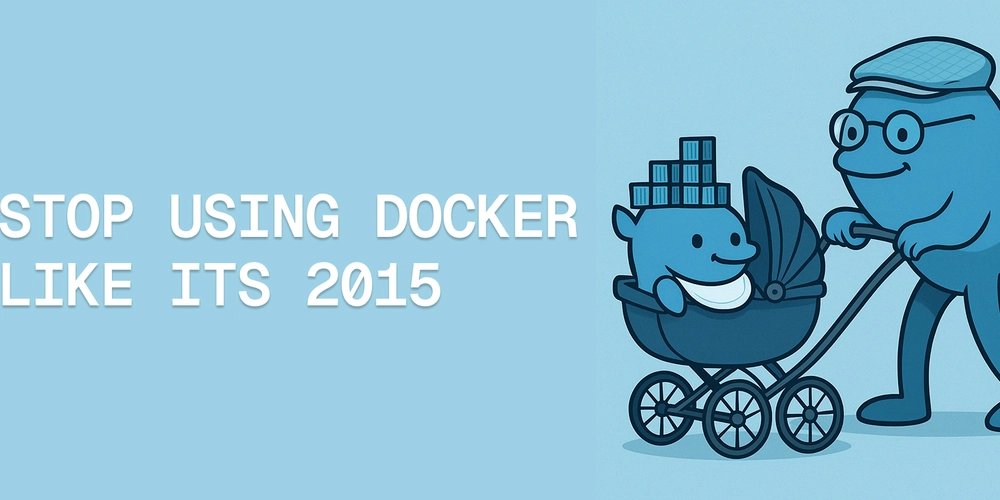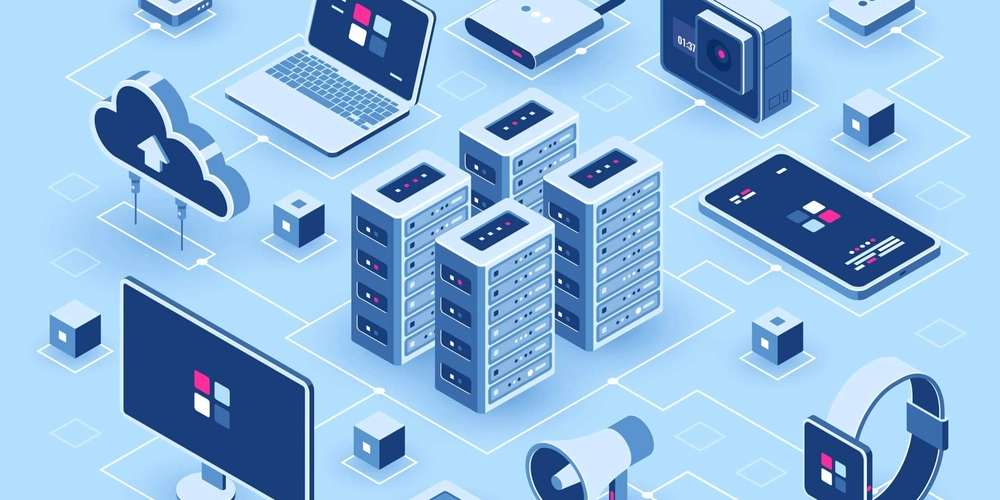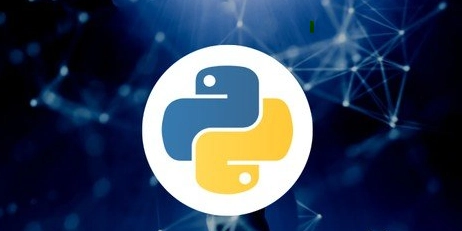Beginner's Guide to Servers, VMs and Hypervisors in DevOps
Introduction Welcome back, fellow tech enthusiasts! If you’re just starting your DevOps journey like me, you’ve probably heard terms like servers, virtual machines (VMs), and hypervisors thrown around. At first glance, they might sound intimidating, but trust me—once we break them down, they’re pretty straightforward. What is a Server ? A server is essentially a powerful computer (or even software) that provides services to other computers, called clients. Think of it as a restaurant kitchen—it prepares and serves data, files, or applications whenever requested. Servers can be: Physical servers – Actual hardware machines sitting in data centers. Virtual servers – Software-based servers running inside a virtual environment. What is a Virtual Machine (VM)? A VM is a software-based emulation of a physical computer. It runs its own operating system (OS) and applications like a real computer while sharing the underlying hardware with other VMs. **Real-World Analogy. Think of a VM like an apartment in a high-rise building: The building (physical server) contains limited space and resources. Each apartment (VM) houses its own tenants (OS & apps), completely isolated from others. They share the same infrastructure (electricity, plumbing, etc.) yet operate independently. What is a Hypervisor? A hypervisor, also known as a virtual machine monitor or virtualizer, is a type of computer software, firmware or hardware that creates and runs virtual machines. A computer on which a hypervisor runs one or more virtual machines is called a host machine, and each virtual machine is called a guest machine. Types of Hypervisors: Type 1 (Bare-Metal Hypervisor) – Runs directly on the physical hardware (e.g., VMware ESXi, Microsoft Hyper-V, Xen). Type 2 (Hosted Hypervisor) – Runs on top of an existing OS (e.g., Oracle VirtualBox, VMware Workstation). Why Do We Need a Hypervisor? Without a hypervisor, we’d need separate physical machines for every OS—costly and inefficient! The hypervisor efficiently allocates CPU, memory, and storage to VMs, ensuring smooth operation. Role of Virtualization in DevOps Virtualization plays a vital role in devops. It, automates various software development processes, including testing and delivery. With the help of it, the its teams can develop and test within virtual and simulated environments using similar devices and systems to the end-users. This way, the development and testing become more efficient and less time-consuming. Virtual live environments can also be provided to test the software at the deployment level. This helps in real-time testing, as the team can check the effect of every new change made to the software. By doing these tasks in virtualized environments, the amount of computing resources is reduced. This real-time testing helps in increasing the quality of the product. Working with a virtual environment reduces the time for retesting and rebuilding the software for production. Thus, it reduces the extra efforts for the devops team, while ensuring faster and reliable delivery. Advantages of Virtual Machines Cost Savings – No need for multiple physical servers; one machine can host many VMs. Isolation & Security – If one VM crashes or gets infected, others remain unaffected. Easy Backup & Recovery – Snapshots allow quick rollback in case of failures. Cross-Platform Testing – Run different OS (Windows, Linux, macOS) on the same hardware. Scalability – Need more servers? Just deploy another VM instead of buying hardware. Disaster Recovery – Migrate VMs across hosts without downtime. Conclusion Virtual Machines (VMs) are a cornerstone of modern DevOps, enabling efficient resource utilization, rapid deployment, and isolated testing environments. By leveraging hypervisors, teams can run multiple OS instances on a single physical machine, reducing hardware costs while improving scalability and security. In DevOps, virtualization accelerates development cycles by allowing teams to test applications in simulated environments that mirror production. This leads to faster deployments, fewer errors, and more reliable software delivery. Additionally, features like snapshots and easy migration enhance disaster recovery and system resilience. As cloud computing and containerization (e.g., Docker, Kubernetes) continue to evolve, VMs remain a fundamental technology for infrastructure management. Whether you're a beginner or an experienced DevOps engineer, mastering virtualization is essential for optimizing workflows and building robust, scalable systems. Thank you for reading, if you came till here then please like,share and do follow me for daily updates.

Introduction
Welcome back, fellow tech enthusiasts! If you’re just starting your DevOps journey like me, you’ve probably heard terms like servers, virtual machines (VMs), and hypervisors thrown around. At first glance, they might sound intimidating, but trust me—once we break them down, they’re pretty straightforward.
What is a Server ?
A server is essentially a powerful computer (or even software) that provides services to other computers, called clients. Think of it as a restaurant kitchen—it prepares and serves data, files, or applications whenever requested.
Servers can be:
- Physical servers – Actual hardware machines sitting in data centers.
- Virtual servers – Software-based servers running inside a virtual environment.
What is a Virtual Machine (VM)?
A VM is a software-based emulation of a physical computer. It runs its own operating system (OS) and applications like a real computer while sharing the underlying hardware with other VMs.
**Real-World Analogy.
Think of a VM like an apartment in a high-rise building:
- The building (physical server) contains limited space and resources.
- Each apartment (VM) houses its own tenants (OS & apps), completely isolated from others.
- They share the same infrastructure (electricity, plumbing, etc.) yet operate independently.
What is a Hypervisor?
A hypervisor, also known as a virtual machine monitor or virtualizer, is a type of computer software, firmware or hardware that creates and runs virtual machines. A computer on which a hypervisor runs one or more virtual machines is called a host machine, and each virtual machine is called a guest machine.
Types of Hypervisors:
- Type 1 (Bare-Metal Hypervisor) – Runs directly on the physical hardware (e.g., VMware ESXi, Microsoft Hyper-V, Xen).
- Type 2 (Hosted Hypervisor) – Runs on top of an existing OS (e.g., Oracle VirtualBox, VMware Workstation).
Why Do We Need a Hypervisor?
Without a hypervisor, we’d need separate physical machines for every OS—costly and inefficient! The hypervisor efficiently allocates CPU, memory, and storage to VMs, ensuring smooth operation.
Role of Virtualization in DevOps
Virtualization plays a vital role in devops. It, automates various software development processes, including testing and delivery. With the help of it, the its teams can develop and test within virtual and simulated environments using similar devices and systems to the end-users. This way, the development and testing become more efficient and less time-consuming. Virtual live environments can also be provided to test the software at the deployment level. This helps in real-time testing, as the team can check the effect of every new change made to the software. By doing these tasks in virtualized environments, the amount of computing resources is reduced. This real-time testing helps in increasing the quality of the product. Working with a virtual environment reduces the time for retesting and rebuilding the software for production. Thus, it reduces the extra efforts for the devops team, while ensuring faster and reliable delivery.
Advantages of Virtual Machines
- Cost Savings – No need for multiple physical servers; one machine can host many VMs.
- Isolation & Security – If one VM crashes or gets infected, others remain unaffected.
- Easy Backup & Recovery – Snapshots allow quick rollback in case of failures.
- Cross-Platform Testing – Run different OS (Windows, Linux, macOS) on the same hardware.
- Scalability – Need more servers? Just deploy another VM instead of buying hardware.
- Disaster Recovery – Migrate VMs across hosts without downtime.
Conclusion
Virtual Machines (VMs) are a cornerstone of modern DevOps, enabling efficient resource utilization, rapid deployment, and isolated testing environments. By leveraging hypervisors, teams can run multiple OS instances on a single physical machine, reducing hardware costs while improving scalability and security.
In DevOps, virtualization accelerates development cycles by allowing teams to test applications in simulated environments that mirror production. This leads to faster deployments, fewer errors, and more reliable software delivery. Additionally, features like snapshots and easy migration enhance disaster recovery and system resilience.
As cloud computing and containerization (e.g., Docker, Kubernetes) continue to evolve, VMs remain a fundamental technology for infrastructure management. Whether you're a beginner or an experienced DevOps engineer, mastering virtualization is essential for optimizing workflows and building robust, scalable systems.
Thank you for reading, if you came till here then please like,share and do follow me for daily updates.




























![[Webinar] AI Is Already Inside Your SaaS Stack — Learn How to Prevent the Next Silent Breach](https://blogger.googleusercontent.com/img/b/R29vZ2xl/AVvXsEiOWn65wd33dg2uO99NrtKbpYLfcepwOLidQDMls0HXKlA91k6HURluRA4WXgJRAZldEe1VReMQZyyYt1PgnoAn5JPpILsWlXIzmrBSs_TBoyPwO7hZrWouBg2-O3mdeoeSGY-l9_bsZB7vbpKjTSvG93zNytjxgTaMPqo9iq9Z5pGa05CJOs9uXpwHFT4/s1600/ai-cyber.jpg?#)














































































































































![[The AI Show Episode 144]: ChatGPT’s New Memory, Shopify CEO’s Leaked “AI First” Memo, Google Cloud Next Releases, o3 and o4-mini Coming Soon & Llama 4’s Rocky Launch](https://www.marketingaiinstitute.com/hubfs/ep%20144%20cover.png)




































































































































































































![Rogue Company Elite tier list of best characters [April 2025]](https://media.pocketgamer.com/artwork/na-33136-1657102075/rogue-company-ios-android-tier-cover.jpg?#)








































































_Andreas_Prott_Alamy.jpg?width=1280&auto=webp&quality=80&disable=upscale#)




























































































![What’s new in Android’s April 2025 Google System Updates [U: 4/18]](https://i0.wp.com/9to5google.com/wp-content/uploads/sites/4/2025/01/google-play-services-3.jpg?resize=1200%2C628&quality=82&strip=all&ssl=1)










![Apple Watch Series 10 Back On Sale for $299! [Lowest Price Ever]](https://www.iclarified.com/images/news/96657/96657/96657-640.jpg)
![EU Postpones Apple App Store Fines Amid Tariff Negotiations [Report]](https://www.iclarified.com/images/news/97068/97068/97068-640.jpg)
![Apple Slips to Fifth in China's Smartphone Market with 9% Decline [Report]](https://www.iclarified.com/images/news/97065/97065/97065-640.jpg)



































































































































